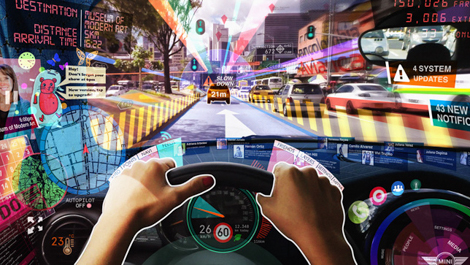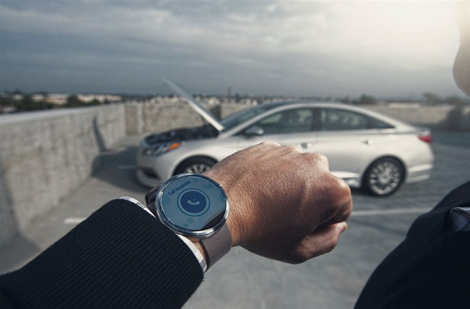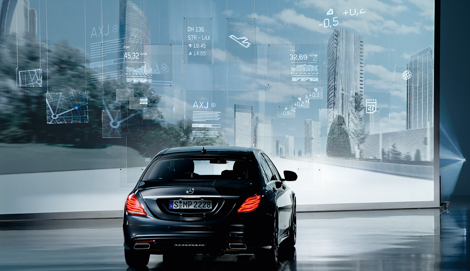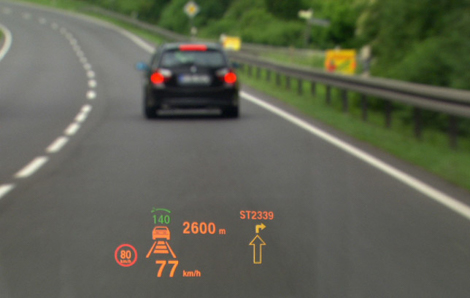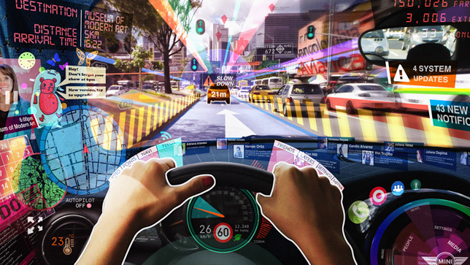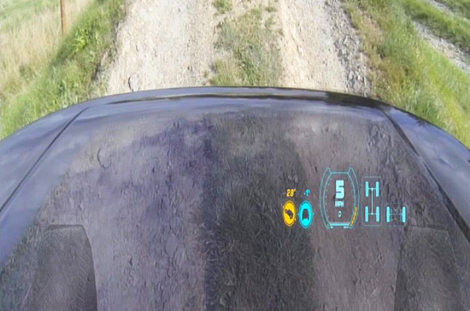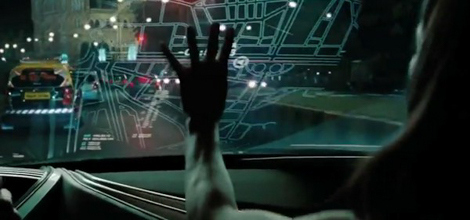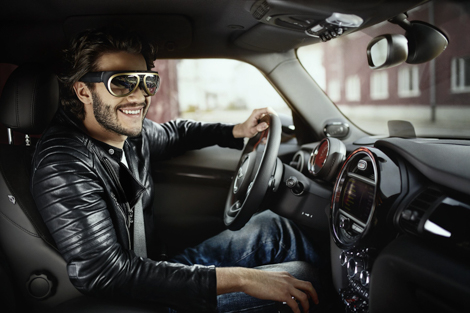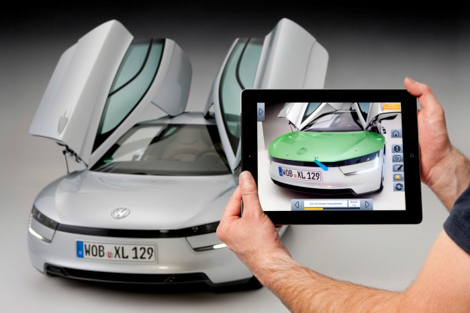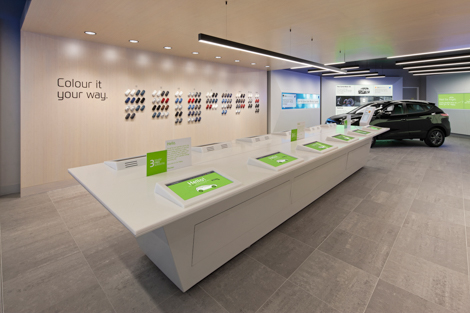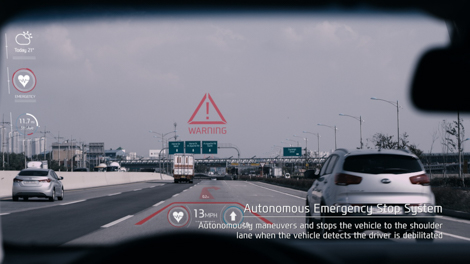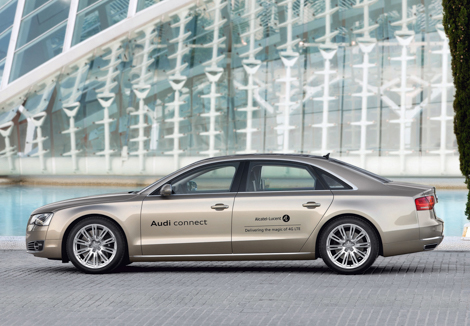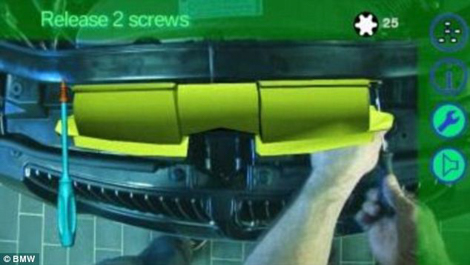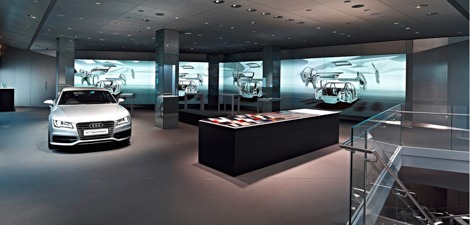Great Scott! Remember in Back to the Future 2, which was coincidentally set in 2015, when a holographic shark advertising the movie Jaws 19 attacks Marty on the street? Well, that's an example of augmented reality (AR) used in advertising.
An augmented reality (AR) is one in which real-world real-time environmental elements are modified by a computer. Now, in the movie, McFly didn't have to use any hardware to experience the augmentation but much like hoverboards and flying cars, we are still a little bit behind the future (although Lexus is working on the hoverboard).
However, when it comes to utilising this future technology the car industry is ahead of most others and as far back as 2008 well-known players started implementing AR into their advertising campaigns. For example, in 2008, MINI brought a print advert to life using a desktop computer and a webcam:
By augmenting this print advert, MINI was able to give viewers a 3D walk around of its new car, highlighting its dimensions, design and aesthetic features, which, up until then, consumers could only see when viewing the car in the metal. This brought a new dimension to the car advert giving added value to the consumer.
The use of AR within the car industry is no longer just restricted to advertising. In fact, the car industry has adopted AR for a wide variety of different purposes.
Using augmented reality technology during the design stage of car-making allows manufacturers to be creative and design concept models with minimum cost. This means many variants can be shown, modified and assessed during the early phases thus reducing the time and cost required for the overall process.
For example, Volkswagen uses spatial augmented reality to project virtual data on to real vehicle design models thus allowing the analyses of components straight away. This saves time and costs required in product development because designs can be accepted or rejected without having to produce a physical prototype. Smart, right?
Whilst we are still waiting for time machines and self-lacing high-tops, the video glasses worn by Marty and his sister in Back to the Future are more or less a reality nowadays (Google Glass anyone?) and BMW mechanics are utilising this tech when carrying out car maintenance.
BMW service engineers wear head-mounted displays whilst working on cars and augmented reality projections instruct them how to proceed and what tools to use. This can help train staff or act as a best practice guide to follow, particularly when working on more obscure, complicated or high value vehicles. Can you imagine how different it must be to service a 1 Series compared to say a BMW i8? With augmented reality, mechanics have all the information at their disposal, precisely where they need it: in the workshop, at the vehicle.
Car companies are also using augmented reality to create digital showrooms, allowing them to present as many different car variants as they like to the consumer. Audi City, for example, is a digital car showroom that uses state-of-the-art technology to make clever use of precious city space. Currently Audi has 51 different model variants, which will increase to 60 over the next two years. Can you imagine the size of the showroom and cost of having that many models on show? However, by using AR technologies customers can configure their car as well as see and hear it in this augmented space.
Visitors can experience every possible combination of the Audi range in a way never before seen. With 93 per cent of consumers spending their time researching new car purchases online Audi is using AR to bring its cars to its customers rather than waiting for customers to come to them, thus increasing leads and sales.
Hyundai is also doing the same with Rockar Hyundai, its UK dealership with no salespeople. Now doesn't that sound good?
Augmented reality brings many advantages to the car industry especially in the area of safety. A number of manufacturers already offer or are developing AR built into windscreens, which could possibly triple the number of infotainment applications and make driving safer. These digital displays can highlight risks in the environment and warn of potential distractions or unsafe driving habits. These head-up-displays (HUD) provide safer positioning of read-outs such as speedometer and satnav removing the need for drivers to look down and take their eyes off the road. Safety assistance, including weather updates, driving conditions and information assistance like traffic reports, night driving assistance, as well as enhanced maps, presents itself safely and accurately to the driver who continues looking at the road ahead - thus reducing distractions and road traffic accidents.
For example, the futuristic HUD found inside the 2015 Hyundai Genesis (not currently sold in Ireland), includes driving information such as Smart Cruise Control status, navigation and Blind Spot Detection, plus Forward Collision and Lane Departure Warnings. Projection of all this information is at a perceived virtual distance approximately six feet ahead of the driver for maximum legibility.
Land Rover has even gone so far as to build a Transparent Bonnet Concept allowing a new level of driver awareness with a 'see-through' augmented reality view of the terrain ahead, making the front of the car 'virtually' invisible from inside the cabin. This allows for safer, more accurate reading of the terrain especially when off-roading. Now that is the stuff of movies!
Once again MINI is leading the way when it comes to integrating AR into the driving experience with the development of MINI Augmented Vision, glasses (that can communicate with the car itself) that the driver wears both inside and outside of the car. Using see-through technology (an electronic display allowing users to see what is shown on a glass screen while still being able to see through it), the glasses show relevant information in the driver's direct field of vision but without concealing other road users, thereby serving to increase safety while driving. Standard HUD information displays on the glasses as well as other features such as walking directions from your current location to your car as well as nearby points-of-interests and empty parking spaces. The glasses also receive projections from rear cameras to help you park better. Goodbye kerbed wheels. The glasses also serve to give the driver x-ray vision, kind of, making A-pillars and doors transparent to make external areas and concealed objects visible, much like the Land Rover Transparent Bonnet Concept.
Hyundai is also developing AR wearables and has developed a wristband that communicates with its cars, as demonstrated at this year's CES. Soon we will all be making like Michael Knight; who knew David Hasselhoff was such an influencer?
Augmented reality is also quite a useful learning tool for driving instructors. By providing both students and instructors with head-mounted display units (yes those futuristic glasses again), students can experience driving scenarios that trigger active safety systems in the car. These would be too dangerous to experience in reality on real roads, so combining AR tech with car simulators would offer a safe and effective way of testing such car systems. So, instructors will not have to endure heart attack-inducing emergency stops for much longer. Hurrah! Mercedes-Benz is also using AR driving simulators made to test the systems and components of future Mercedes models in all development phases.
However, just like in the movies - I'm thinking Lawnmower Man, The Thirteenth Floor and The Matrix - there are downsides and disadvantages to using such technologies. Although I have just sung the praises of AR with regard to improving safety, it can have negative effects on safety too. Augmented reality windscreens can present too much information and distract drivers, and lawmakers will have to decide on the use of these technologies, as the obstructive and distracting nature of windshield AR displays, especially full windshield Heads-up-Displays (fwHUD), may make them hazardous. If deemed so, these technologies could be prohibited much in the way mobile phones (without a hands-free set) are at present.
Another disadvantage of AR technology is its internet dependency. For years now, cars have had online connectivity, typically achieved by synchronising a smartphone to the vehicle and using the phone's data plan. However, connectivity is dependent on coverage and if the phone loses signal AR features may no longer work. However, this may not be a disadvantage for much longer as companies including General Motors and Audi are installing 4G LTE (long-term evolution) technology in their vehicles, which means these cars will be able to connect to the internet independently and utilise custom-made apps. Therefore, if you lose phone signal the AR features will still be able connect to the car and keep working.
Although this does raise another interesting question about relying on these features too much when driving. What would happen if you did lose GPS or parking assist or ran out of plutonium? Would you still find your way home or be able to parallel park using just your driving skills? Let's hope for other road users, and the space-time continuum, that you answered yes to those.

